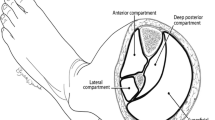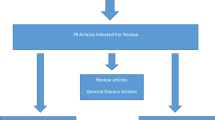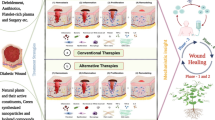Abstract
Purpose of Review
We discuss management of arterial wounds pertaining to clinical evaluation, noninvasive diagnostic testing, and relevant classification systems of arterial wounds. In addition, we review recent literature regarding treatment modalities of arterial wounds.
Recent Findings
Treatment of arterial wounds is multifactorial and can include the following: local wound care, hyperbaric oxygen therapy, skin grafting, and biologic and regenerative medicine including gene and cellular therapy. This paper is a discussion of the various treatment options for chronic arterial wounds with a review of recent literature.
Summary
Chronic wounds result from impaired healing processes secondary to systemic or local factors. In order to properly manage and treat nonhealing wounds of the lower extremities, it is paramount to determine the underlying etiology or mixed etiologies contributing to the disruption of the wound-healing process in order to manage them appropriately.
Similar content being viewed by others
References and Recommended Reading
Papers of particular interest, published recently, have been highlighted as: • Of importance •• Of major importance
Wallace HA, Basehore BM, Zito PM. Wound healing phases. [Updated 2019 Aug 10]. In: StatPearls [Internet]. Treasure Island (FL): StatPearls Publishing; 2019. Available from: https://www.ncbi.nlm.nih.gov/books/NBK470443/
•• Sheehan P, Jones P, Giurini JM, Caselli A, Veves A. Percent change in wound area of diabetic foot ulcers over a 4-week period is a robust predictor of complete healing in a 12-week prospective trial. Plast Reconstr Surg. 2006;117(7 Suppl):239S–244S. https://doi.org/10.1097/01.prs.0000222891.74489.33. Wounds that fail to heal within the timespan of 4–6 weeks are considered chronic. When it comes to determining the effectiveness of a treatment being implemented for a wound, literature suggests that a 53% reduction in the ulcer area within a 4-week time interval is a good indicator that the wound will heal over a 12-week period. Sheehan et al. suggests changing the treatment approach based on such predictive measures if the wound does not heal within 4–6 weeks.
Russell L. The importance of patients’ nutritional status in wound healing. Br J Nurs. 2001;10(Sup1):S42–9.
Lam K, van Asten SAV, Nguyen T, La Fontaine J, Lavery LA. Diagnostic accuracy of probe to bone to detect osteomyelitis in the diabetic foot: a systematic review. Clin Infect Dis. 2016;63(7):944–8.
Lee YJ, Sadigh S, Mankad K, Kapse N, Rajeswaran G. The imaging of osteomyelitis. Quant Imaging Med Surg. 2016;6(2):184–98. https://doi.org/10.21037/qims.2016.04.01.
Park SC, Choi CY, In Ha Y, Yang HE. Utility of Toe-brachial Index for Diagnosis of Peripheral Artery Disease. Arch Plast Surg. 2012;39(3):227–31.
Frykberg RG. Diabetic foot ulcers: pathogenesis and management. Am Fam Physician. 2002;66(9):1655–62.
Harrison ML, Lin H-F, Blakely DW, Tanaka H. Preliminary assessment of an automatic screening device for peripheral arterial disease using ankle–brachial and toe–brachial indices. Blood Press Monit. 2011;16(3):138–41.
Spentzouris G, Labropoulos N. The evaluation of lower-extremity ulcers. Semin Interv Radiol. 2009;26(04):286–95. https://doi.org/10.1055/s-0029-1242204.
• Joseph L, et al. The Society for Vascular Surgery Lower Extremity Threatened Limb Classification System: risk stratification based on wound, ischemia, and foot infection (WIfI) Mills. J Vasc Surg. 59(1):220–234.e2 The WIfI classification is an extensive system that merges multiple established systems to provide a thorough approach to categorize major risk factors leading to amputation. This system defines the wound to a greater extent than previous systems, providing information on limb preservation, amputation risk and wound healing potential.
Conti MS, et al. Global vascular guidelines on the management of chronic limb-threatening ischemia. Eur J Vasc Endovasc Surg. 2019;58(1):S1–S109. https://doi.org/10.1016/j.ejvs.2019.05.006.
Faglia E, Favales F, Aldeghi A, Calia P, Quarantiello A, Oriani G, et al. Adjunctive systemic hyperbaric oxygen therapy in treatment of severe prevalently ischemic diabetic foot ulcer: a randomized study. Diabetes Care. 1996;19:1338–43.
Anderson JJ, Wallin KJ, Spencer L. Split thickness skin grafts for the treatment of non-healing foot and leg ulcers in patients with diabetes: a retrospective review. Diabetic Foot Ankle. 2012;3. https://doi.org/10.3402/dfa.v3i0.10204.
Papa G, Spazzapan L, Pangos M, Delpin A, Arnez ZM. Compared to coverage by STSG grafts only reconstruction by the dermal substitute Integra® plus STSG increases TcPO2 values in diabetic feet at 3 and 6 months after reconstruction*. Il Giornale di chirurgia. 2014;35(5–6):141–5.
Gkotsoulias E. Split thickness skin graft of the foot and ankle bolstered with negative pressure wound therapy in a diabetic Population: The Results of a Retrospective Review and Review of the Literature. Foot Ankle Spec. 2019. https://doi.org/10.1177/1938640019863267.
Fui LW, Lok MPW, Govindasamy V, Yong TK, Lek TK, Das AK. Understanding the multifaceted mechanisms of diabetic wound healing and therapeutic application of stem cells conditioned medium in the healing process. J Tissue Eng Regen Med. 2019;13:2218–33. https://doi.org/10.1002/term.2966.
Preeja C, Arun S. Platelet-rich fibrin: its role in periodontal regeneration. Saudi J Dent Res. 2014;5(2):117–22. https://doi.org/10.1016/J.KSUJDS.2013.09.001.
Nikol S, Baumgartner I, Van Belle E, Diehm C, Visoná A, Capogrossi MC, et al. Therapeutic angiogenesis with intramuscular NViFGF improves amputation-free survival in patients with critical limb ischemia. Mol Ther. 2008;16:972–8.
Belch J, Hiatt WR, Baumgartner I, Driver IV, Nikol S, Norgren I, et al. Effect of fibroblast growth factor NV1FGF oon amputation and death; a randomised placebo-controlled trial of gene therapy in critical limb ischemia. Lancet. 2011;377:1929–37.
Hashi CK, Zhu Y, Yang GY, Young WL, Hsiao BS, Wang K, et al. Antithrombogenic property of bone marrow mesenchymal stem cells in nanofibrous vascular grafts. Proc Natl Acad Sci U S A. 2007;104(29):11915–20.
Kato Y, Iwata T, Morikawa S, Yamato M, Okano T, Uchigata Y. Allogeneic transplantation of an adipose-derived stem cell sheet combined with artificial skin accelerates wound healing in a rat wound model of type 2 diabetes and obesity. Diabetes. 2015;64(8):2723–34. https://doi.org/10.2337/db14-1133.
Cao Y, Gang X, Sun C, Wang G. Mesenchymal stem cells improve healing of diabetic foot ulcer. J Diabetes Res. 2017;2017:1–10. https://doi.org/10.1155/2017/9328347.
Jung J-A, Yoon Y-D, Lee H-W, Kang S-R, Han S-K. Comparison of human umbilical cord blood-derived mesenchymal stem cells with healthy fibroblasts on wound-healing activity of diabetic fibroblasts. Int Wound J. 2018;15(1):133–9. https://doi.org/10.1111/iwj.12849.
Maksimova N, Krasheninnikov M, Zhang Y, Ponomarev E, Pomytkin I, Melnichenko G, et al. Early passage autologous mesenchymal stromal cells accelerate diabetic wound re-epithelialization: a clinical case study. Cytotherapy. 2017;19(12):1548–50. https://doi.org/10.1016/j.jcyt.2017.08.017.
Qin HL, Zhu XH, Zhang B, Zhou L, Wang WY. Clinical evaluation of human umbilical cord mesenchymal stem cell transplantation after angioplasty for diabetic foot. Exp Clin Endocrinol Diabetes. 2016;124(8):497–503.
Author information
Authors and Affiliations
Corresponding author
Ethics declarations
Conflict of Interest
Danielle Edwards declares that she has no conflict of interest. Alexandra T. Black declares that she has no conflict of interest. William D. Spielfogel declares that he has no conflict of interest.
Human and Animal Rights and Informed Consent
This article does not contain any studies with human or animal subjects performed by any of the authors.
Additional information
Publisher’s Note
Springer Nature remains neutral with regard to jurisdictional claims in published maps and institutional affiliations.
This article is part of the Topical Collection on Vascular Disease
Rights and permissions
About this article
Cite this article
Edwards, D., Black, A.T. & Spielfogel, W.D. A Multidisciplinary Approach to Managing Ischemic Wounds and Current Treatment Options. Curr Treat Options Cardio Med 23, 51 (2021). https://doi.org/10.1007/s11936-021-00929-y
Accepted:
Published:
DOI: https://doi.org/10.1007/s11936-021-00929-y





